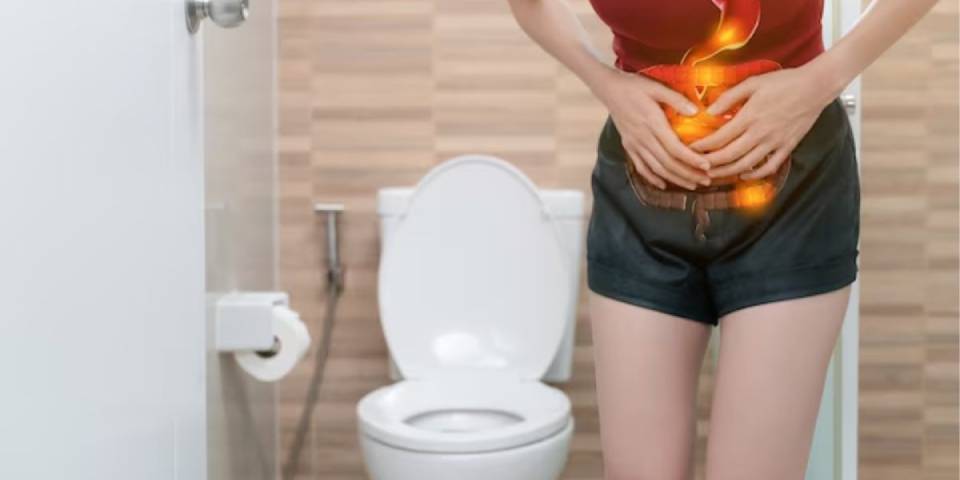Lying flat shouldn't mean lying awake in burning pain. If nighttime acid reflux has you tossing and turning, desperately searching for a comfortable position that won't trigger that familiar chest burn, you're not alone. Nighttime acid reflux affects 75% of GERD sufferers, often striking hardest when you're trying to rest.
The truth is, nighttime acid reflux isn't just about what you eat it's about how gravity works against you when you lie down. But with the right elevation strategies, you can reclaim peaceful sleep without the midnight burn. This guide reveals 5 scientifically-backed elevation hacks to stop nighttime acid reflux before it starts, plus our 2-minute quiz to identify your unique digestive triggers and create a personalized plan built for your body, not someone else's.

Table of contents
Why Nighttime Acid Reflux Gets Worse When You Lie Down
when you're horizontal. Understanding these mechanisms helps you implement the most effective elevation strategies.
When you lie flat, gravity stops helping keep stomach acid where it belongs. Your lower esophageal sphincter (LES) naturally relaxes during sleep, creating an easier pathway for acid to escape upward. Additionally, nighttime acid reflux worsens because saliva production decreases while sleeping, reducing your body's natural acid-neutralizing mechanism.
Research published in the American Journal of Gastroenterology found that nighttime acid reflux episodes last significantly longer than daytime episodes, with acid remaining in contact with the esophagus up to 40% longer when lying flat.
5 Proven Elevation Hacks to Stop Nighttime Acid Reflux

1. Master the 6-8 Inch Upper Body Elevation Method
The most effective nighttime acid reflux prevention technique involves elevating your entire upper body, not just your head. This positioning uses gravity to keep stomach acid down while maintaining comfortable sleep alignment.
How to implement this elevation hack:
- Raise the head of your bed 6-8 inches using bed risers or blocks
- Ensure the entire upper portion of your mattress is angled, not just propped up
- Maintain a gradual slope from chest to head for optimal comfort
This elevation angle reduces nighttime acid reflux episodes by up to 67% according to clinical studies, making it the gold standard for positioning-based relief.
2. Strategic Pillow Positioning for Maximum Relief
Creating the perfect pillow setup can significantly reduce nighttime acid reflux when bed elevation isn't possible. The key lies in supporting your entire torso, not just your neck and head.
Optimal pillow arrangement:
- Use a wedge pillow designed specifically for acid reflux (30-45 degree angle)
- Add a thin pillow on top for neck comfort
- Place a pillow between your knees to maintain spinal alignment
This strategic positioning keeps stomach acid from flowing upward while preventing the neck strain that often comes with elevated sleeping.

3. Left-Side Sleeping Position Technique
Your sleep position plays a crucial role in managing nighttime acid reflux . Sleeping on your left side leverages your stomach's natural anatomy to reduce acid exposure to the esophagus.
Why left-side sleeping works:
- Positions the stomach below the esophageal opening
- Reduces pressure on the lower esophageal sphincter
- Allows gravity to help keep acid contained
Research shows that left-side sleeping reduces nighttime acid reflux symptoms by 71% compared to sleeping on the right side or back.
4. The Graduated Elevation System
For severe nighttime acid reflux, a graduated elevation approach provides maximum relief while maintaining sleep comfort. This method involves creating multiple elevation points throughout your sleep surface.
Step-by-step graduated elevation:
- Elevate the head of your bed 6-8 inches
- Add a wedge pillow for additional upper body support
- Use a thin pillow under your knees to prevent sliding down
This comprehensive elevation system addresses nighttime acid reflux from multiple angles, ensuring acid stays in your stomach regardless of sleep movement.
5. Timing Your Evening Elevation Routine
When you begin your elevation preparation is just as important as how you elevate. Creating a consistent nighttime acid reflux prevention routine helps your body adapt to elevated sleeping.
Optimal elevation timing:
- Set up your elevated sleeping position 2-3 hours before bed
- Avoid lying down for at least 3 hours after eating
- Maintain elevated position throughout the entire night
Consistency with elevation timing reduces nighttime acid reflux frequency and helps establish healthier sleep patterns.

Elevation is your most powerful tool against nighttime acid reflux , but implementation matters. The 6-8 inch upper body elevation method provides the strongest relief, while left-side sleeping and strategic pillow positioning offer additional support. Remember that nighttime acid reflux management requires consistency, both in elevation technique and timing.
How high should I elevate my bed for nighttime acid reflux?
Elevate the head of your bed 6-8 inches for optimal nighttime acid reflux relief. This angle is steep enough to prevent acid backflow while remaining comfortable for sleep.
Is it better to use pillows or a wedge for nighttime acid reflux?
A wedge pillow specifically designed for acid reflux is more effective than stacking regular pillows. Wedges provide consistent elevation and prevent sliding down during sleep.
How long does it take for elevation to help nighttime acid reflux ?
Most people experience reduced nighttime acid reflux symptoms within 1-3 nights of consistent elevation. Full adaptation to elevated sleeping typically occurs within 1-2 weeks.
Should I eat differently if I use elevation for nighttime acid reflux?
Yes, avoid eating 3-4 hours before bed and limit acid reflux trigger foods in the evening. Elevation works best when combined with proper meal timing and food choices.










